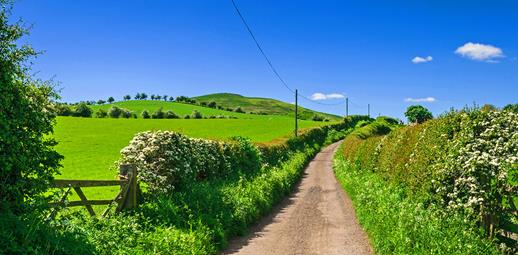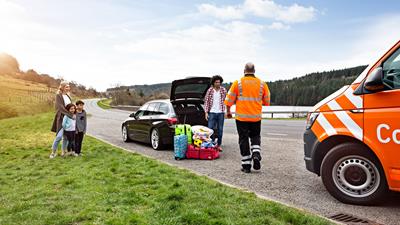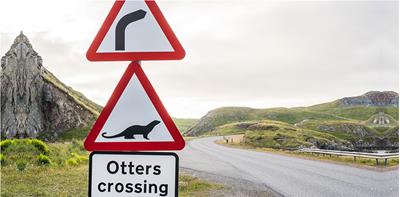
With many of us planning a UK road trip over the holidays and driving in unfamiliar territory, here are some pointers to make sure you’re fully prepared.
It can be a real treat to drive on quiet country roads, especially when the weather is fine, and you can take in the sights as you motor along and appreciate your new surroundings.
But the sad truth is that, despite their charms, rural roads are full of dangers for road users.
While drivers may be aware of the more common risks of tight corners, animals, and narrow lanes, there are several other factors that increase the danger on rural roads.
1. Vulnerable road users
When driving your car on a country road, you might not expect to come across pedestrians.
But you never know when you might suddenly happen upon a walker who has had to leave a footpath to travel some distance by road. When the road is narrow and bendy, with no footpaths, this can be dangerous.
The same goes for the risks of turning a sharp corner and suddenly coming across a cyclist; in 2019, 60 cyclists were killed on rural roads, compared to 40 on urban roads[1]
2. Fallen branches
From horses to tractors, you need to learn to expect the unexpected on country roads. One common hazard is debris, like fallen branches from overhanging trees. Similarly, you could come across large stones washed out from fields, as well as mud or spillages from agricultural vehicles. The risks can be particularly heightened outside the entrances to farms.
Hitting debris at speed can cause your vehicle to lose traction with the road surface, so take care and watch your speed.
3. Lack of crash protection
Many rural roads have poor road surface conditions and limited crash protection, such as crash barriers. Often this is simply because there isn’t space for such features.
Rumble strips are also often not installed on single carriageways. These provide a jolt to alert motorists of their position on the road when they drive over them - as an effective way of reducing crashes[2].
Some road safety experts have called for more rumble strips along the edge of rural roads.

Breakdown cover
Available to add to an existing Ageas car insurance policy, from £32 a year.
4. Poor road surfaces
It’s also important to be mindful of varying road surfaces on country roads as they can sometimes be particularly poor. In a country full of potholed roads, rural lanes are often particularly scarred.
But driving on poorly maintained roads can be dangerous if you’re not cautious. Driving over deep potholes at speed can result in loss of control of your car, or at the very least cause damage to your car. So, be alert for signs of wear to the road and try, if possible, to avoid driving on those areas if you don’t have to.
5. Drivers’ attitudes to rural driving
Some drivers see rural roads as an opportunity to put their foot to the metal and ignore the speed limit. In a survey conducted for road safety charity Brake, more than two thirds (68%) of drivers said they felt it was acceptable to drive above the speed limit on rural roads[3].
Whilst this might be tempting for some, this is especially dangerous given the tight corners often found on rural roads - as well as all the other dangers outlined above.
No £25 admin fee
When you update your policy online, e.g. amend driver, address or car details.
Brake suggests slowing down is one of the most important things drivers can do to protect themselves and other road users on rural roads. You should stay well within speed limits, avoid overtaking unless absolutely necessary, and slow down particularly when visibility is poor.
In addition, the THINK! driving safety campaign urges drivers using country roads to:
- read the road ahead and anticipate potential hazards
- drive at a speed that allows you to stop in the distance you can see to be clear
- stay in control and give yourself time to react by braking before a bend, not on it
- give cyclists and horse riders plenty of space when overtaking
All drivers should be aware of the risks of driving on rural roads. But if you normally drive on larger roads or in urban areas and are heading on holiday or on a cross-country road trip, then just make sure you take extra care.
Go to Solved to read more about driving, the rules of the road and road safety.
[1] https://www.rospa.com/media/documents/road-safety/rural-road-safety-factsheet.pdf
[2] https://www.ageas.co.uk/solved/road-safety/how-to-make-our-roads-safer/
[3] https://www.brake.org.uk/get-involved/take-action/mybrake/knowledge-centre/road-design/rural-roads
How to navigate rural roads
We've gathered some useful advice and guides on how to tackle the UK's rural roads, visit our rural roads hub.


